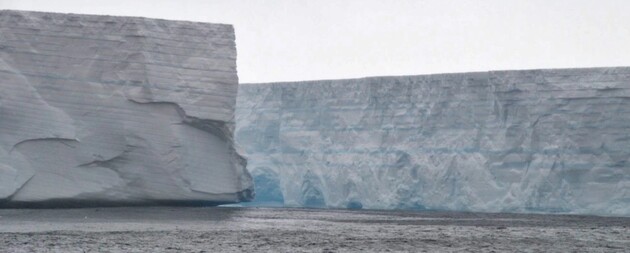The size of the iceberg can be compared with London.

Scientists from the British Antarctic Survey (BAS) have released a video of an iceberg the size of London that broke off from Antarctica in January this year. Named A81, the iceberg broke off from the Brant Ice Shelf 10 years after the first cracks appeared, Science Alert reports.
It is said to be the second giant iceberg to break off from Antarctica in two years. Despite the fact that its formation is due to natural causes, it can still cause damage to the surrounding ice.
Also read: Antarctic sea ice melts to a minimum in the history of observations
In the video obtained by BAS, you can see how massive this block of ice is, which looks like an endless sheet even from a height. At the same time, even this is only a fragment of an iceberg, most of its mass is hidden under water.
BAS had to move an entire research station to avoid it ending up on a fragment of ice that broke away. Halley's research station was moved 23 kilometers in 2016 after high-precision GPS instruments and satellite data showed that the chasm along the Brant Ice Shelf was widening.
A81 is now 150 kilometers from where it once was attached to the shelf. It can not only threaten human activity, but also be destructive for the local ecosystem.
“As an iceberg melts, many nutrients are released that can support the growth of microscopic plants, such as phytoplankton, at the base of oceanic food webs. The negative side is that this same melting on such a large scale dumps a lot of fresh water into the ocean, which lowers the salinity level and makes the waters unsuitable for many species of phytoplankton and zooplankton that feed on them. This can have a domino effect on the food web for fish, birds, seals and whales,” says Geraint Tarling, BAS ecologist.

The BAS team continues to closely monitor the A81 and other icebergs in the area, including the A76a, to be aware of any risks they may present. A81 is expected to follow the Antarctic Coastal Current, while A76a is expected to deviate towards some islands. Currently, A76a, with an area of 3,200 square kilometers, is the largest floating iceberg on Earth, twice the size of A81.
Related video
Earlier scientists found that Antarctica experienced ice ages much more often than previously thought
strong>. This was indicated by the analysis of sedimentary rocks collected on the continent.



